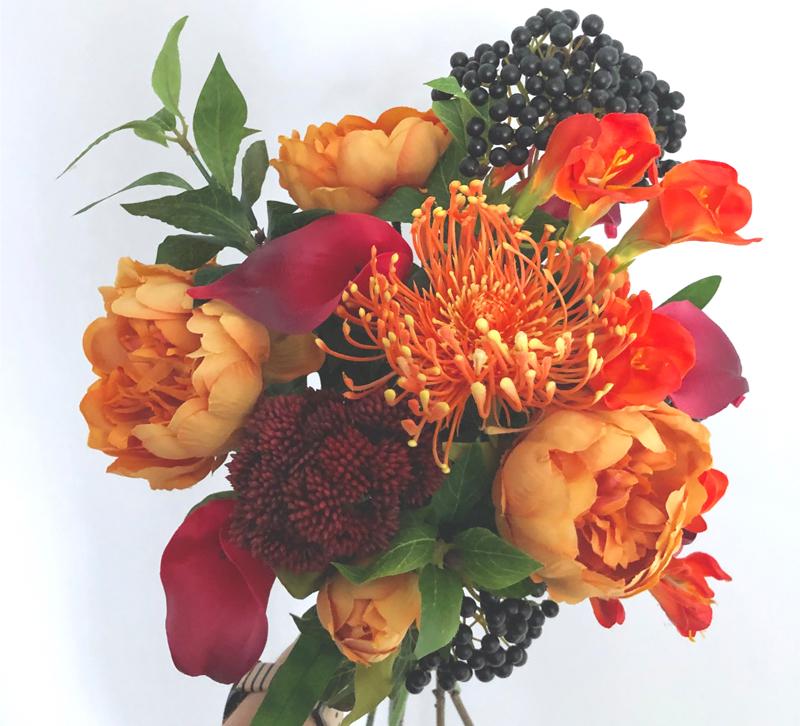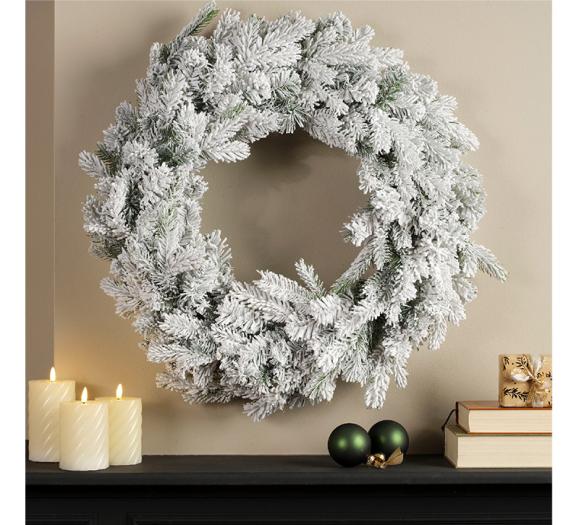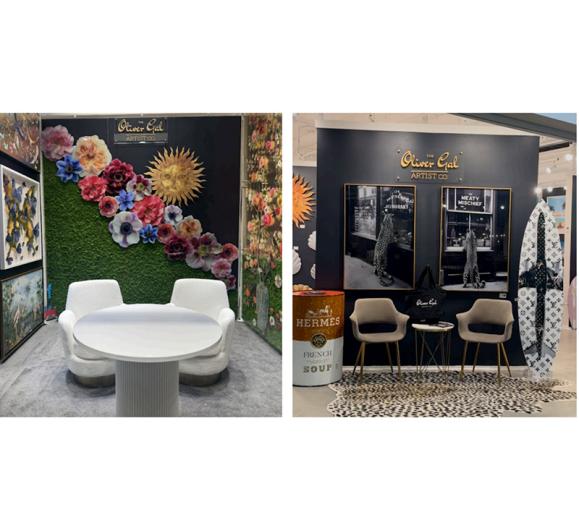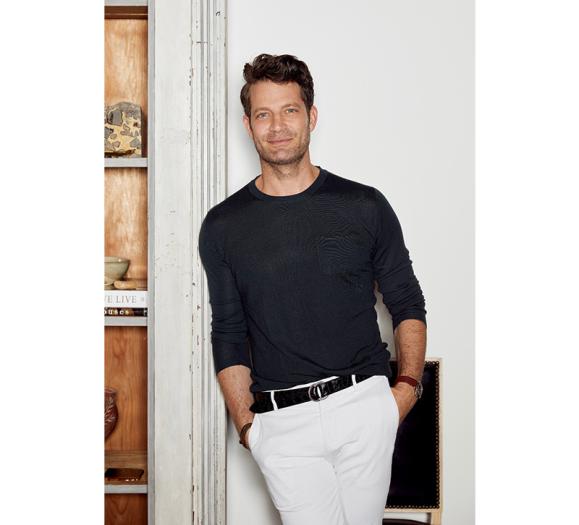Permanent botanicals, sometimes called faux florals, have come a long way since Nana kept a bowl of pink plastic roses on top of the television cabinet and aggressively turquoise silk daisies in the dining room. Today’s flowers — and greenery and succulents, for that matter — are so realistic one must touch them and even pinch them to tell them from their fresh counterparts.
For interior designers and their clients, the obvious benefit is longevity: no watering, no repotting, no worries about sunlight exposure. In other words, no green thumb required. And more clients are enjoying the look of faux arrangements that appear fresh and need next to zero care.
The time seems ripe for permanent botanicals to stage a comeback, and better materials and technologies, along with a changing consumer, are paving the way.
Touch and Feel
Improvements in production and materials are the main reason permanent botanicals have made the leap into the neighborhood florist and luxury design markets. Manufacturers can now use latex and foam, for example, to give a softer, spongy hand feel and can press texture into individual petals rather than stamping out a flat piece of fabric. Some even add scent to individual stems.
“Technology has played an important role in manufacturing floral components that look and feel so lifelike that it is hard to tell the difference,” says Shay Geyer, Owner of IBB Design Fine Furnishings in Frisco, TX. “Many of them are even 3D printed.” Geyer partnered with Shane Friesenhahn, Owner of floral design house The Botanical Mix, to launch a permanent botanical collection at the June 2018 Dallas Market. “It’s certainly an exciting time as a designer with so many beautiful, lifelike options to use to create.”
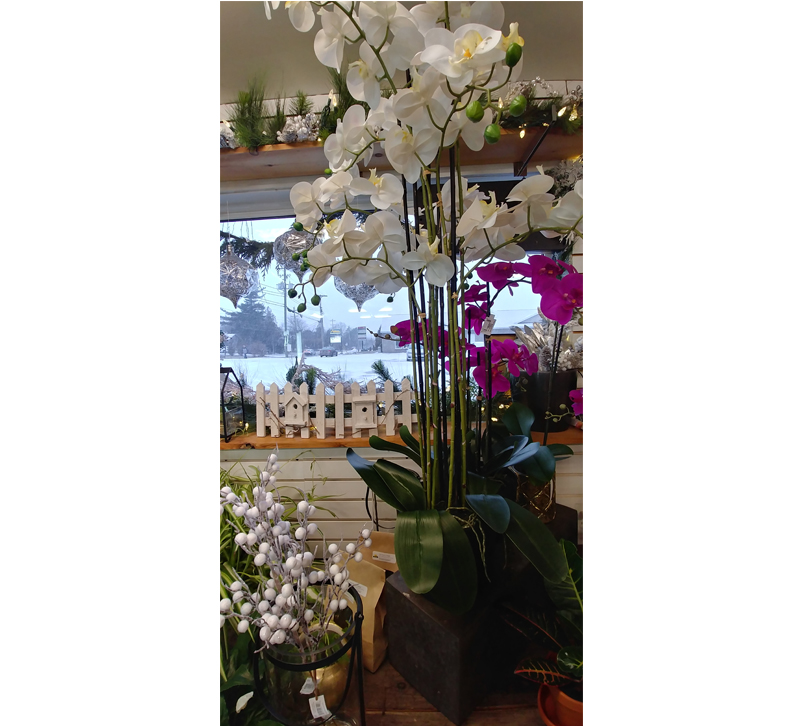
Sandra Miller, owner of Sandra Miller Floral Designs in Rothesay, Canada, remembers well the plastic flowers of yesterday. “Plastic flowers would fade and become discolored because so many people were smoking in their homes,” she says. “But times have changed.” Now, she says, even the stems and roots of faux florals can fool the eye. “Take an orchid. The leaves and petals are foam material with a soft, realistic touch, with all different colors coming out of their throats. They have roots cascading out of their pots. And real soil glued on the tops of the pots,” she says. “It’s incredible. They are investment pieces that will last forever.”
The Charles Lubin Company, Inc., in Yonkers, NY, has been in the faux floral wholesale business for 119 years. The family-owned company sells to the home decor market as well as floral shops, wedding and fashion designers, milliners and gift vendors. Vice President Charles Bordin says he prefers silk petals and travels to Europe and Asia twice a year to meet with designers at their source factories. “Each factory makes things better than others,” he says. “You may go to one factory and say, ‘Make me a tulip,’ and it comes out like a wet rag. But you go to another factory with different materials and coloration, and it’s beautiful.” The best product is made in Europe, he says, but there are also high-quality lines coming out of Thailand, the Philippines and Vietnam. As for trends, Bordin knows that whatever is the hottest color in fashion, next year or year after, that’s the hot color in furniture, and that carries over into florals.
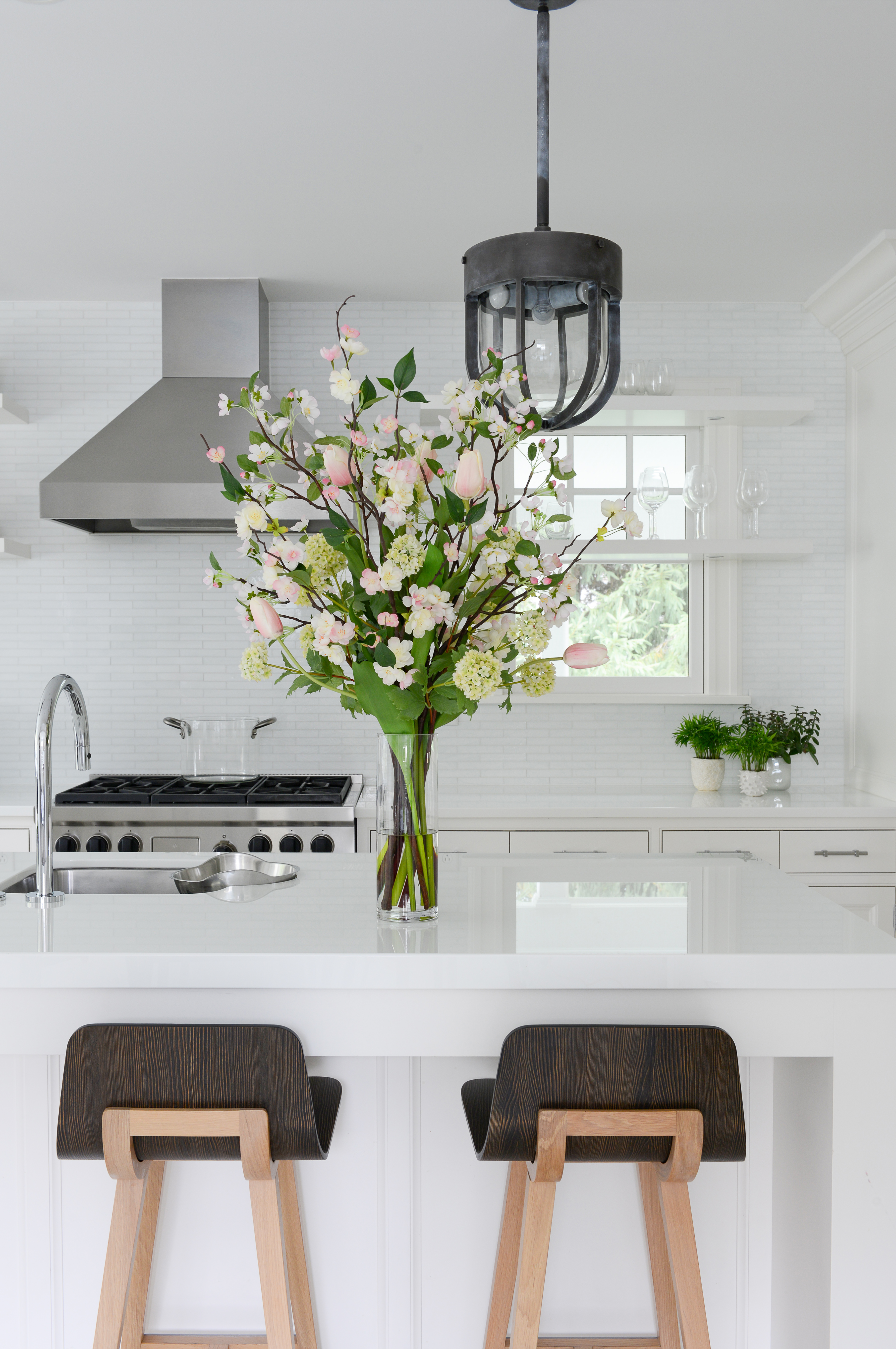
The designers at Connecticut-based luxury faux floral studio Diane James Home follow a fresh-picked aesthetic that comes straight from their founder’s love of European gardens, and though the company does follow design trends, they do not play the matchy-matchy game. “In the past, people thought they had to match their silk flowers to the exact colors of the fabrics in their decor, so you’d have beige hydrangea and burgundy peony and orange dahlia in the bouquet to match the colors in the couch,” says Carolyn James McDonough, who along with her twin sister, Cynthia Matrullo, now runs the company their mother founded. “Don’t do that, it’s not the way to go. You should choose faux flowers just as you would fresh picked stems. Those with color and touchability and texture.”
That’s right, texture. Smooth green succulents, delicately rippled poppies and perfectly peach-fuzzed magnolia leaves are all within reach in today’s permanent botanicals. And McDonough has learned they appeal to a highly desirable demographic. “We attended a hospitality conference and one of the speakers talked about texture because the next generation of consumers grew up 100 percent digital, and they are losing that sense of touch.” Velvets, nubby berries, branches, even protea with spiky stems are full of the texture this screen-centered consumer craves. “Floral design along with a great chunky blanket or a linen pillow adds texture to the room. Having those pieces be a part of the environment and not just a 2D image to look at is important,” McDonough says.
McDonough notes that their love for blooms is booming. The company works with luxury designers including Michael Smith, Celerie Kemble and Mario Buatta, and counts the George W. Bush Presidential Library and Museum among their larger clients. This month, Diane James Home will launch their spring collection called Bohemian Rhapsody. The pinnacle will be the opening of their first showroom, open to the trade and the public, in Norwalk, CT, in April.
Victoria Richards, Owner of Woodham Blooms in Surrey, England, has shipped her permanent botanical arrangements as far as Monaco, the United States and the Bahamas. She loves the medium because it loosens the reins on her creativity. “With real flowers, you should really listen to the season, peonies for example have such a short flowering season, but with faux stems, you can indulge your creative side, mixing and matching flowers and foliage that may not grow in the same season naturally,” she says. “They are also pollen free, to the relief of allergy sufferers and pet owners.”
A Pretty Penny
With price tags that can range from $250 to the low four figures, luxury faux floral arrangements can cause a case of sticker shock. Individual stems start at $6 each. Handmade, custom pieces that are arranged to order by professional designers are not going to cost the same as a sweet bouquet made from craft store stems.
McDonough notes that the vessels and faux water they use are also costly. Her studio uses polyurethane, not the clear acrylic used 10 years ago that simply secured the stems but then yellowed and cracked. “Ours is 100 percent clear and we guarantee it for at least five years,” she says. “We treat the stems before we pour so they will not bleed into the ‘water.’ This also allows us to pour five to six cups in a vase and it is set in about two days. This is an expensive component of our work, but we trust it implicitly.”
Bordin sees the bottom line for clients everyday. “We do restaurants,” he says. “We had one restaurant with a budget of about $60,000 for fresh flowers for the year. Now they’ll come to us and spend $10,000 on arrangements that will last the whole year, and that’s pure profit for them.”
Putting It All Together
McDonough advises clients and designers to think of their faux florals as couture for the home. “Living Coral is the new Pantone Color of the Year,” she explains. “Why not add a bouquet of flowers that are going to last a year or two rather than recover an armchair in that color? You can be a part of what’s happening in texture and color in home decor without changing major pieces.”
Bordin points out that permanent arrangements are perfect for clients with second homes. “A lot of people go down to Florida,” he says, “and they want to walk in for their week’s vacation and see the color of fresh flowers. With these pieces, it’s right there for them.”
Clients can also move arrangements from room to room to extend their enjoyment of their permanent pieces. “The investment is so well worth it,” McDonough says. “We hear this from our clients time and again. Their friends and family say ‘You have such pretty fresh flowers’ and they are tickled pink.”



